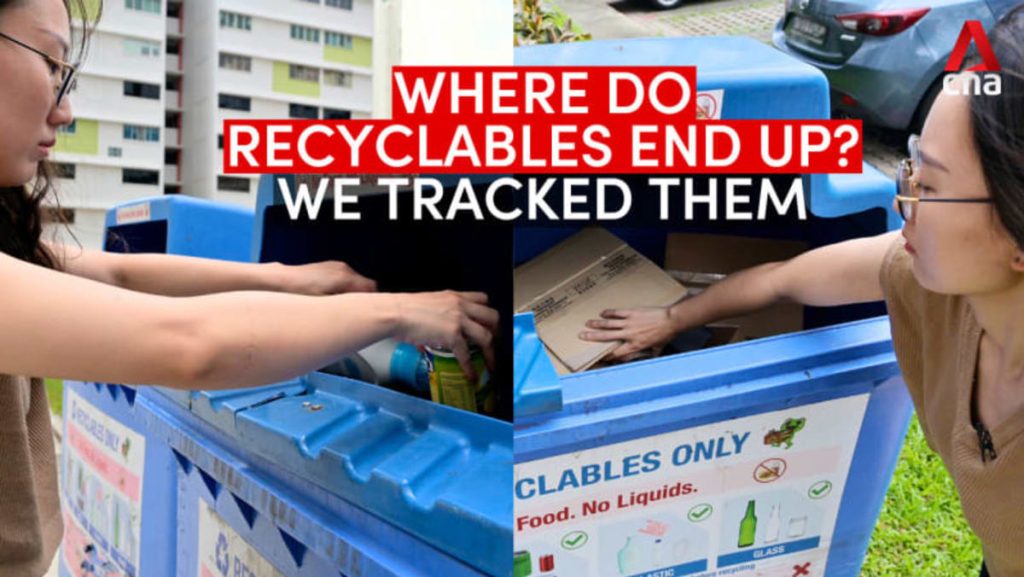In Singapore, recyclables collected in the blue recycling bins are sorted at the Materials Recovery Facility (MRF) before being sent to recycling facilities for processing. CNA journalist Koh Wan Ting decided to investigate further by tracking 12 recyclable items to see where they ended up. This was done to shed light on the recycling process and show how materials are handled after being put in the blue bins. The items included cardboard boxes, plastic bottles, glass jars, and aluminum cans.
The tracked items were fitted with GPS trackers to monitor their journey after being collected from the blue recycling bins. Koh Wan Ting monitored the items as they were collected by workers from the recycling contractor and taken to the MRF for sorting. The process at the MRF involves separating different types of recyclables using machines and manual sorting. Once sorted, the materials are baled and shipped off to recycling facilities, where they are processed into new products.
Through the tracking experiment, it was found that the recyclables collected from the blue bins in Singapore end up at recycling facilities in different countries. The cardboard boxes were sent to Indonesia for processing, while the plastic bottles and aluminum cans were shipped to Malaysia. The glass jars, on the other hand, were sent to a recycling facility in Singapore. This shows that Singapore exports a portion of its recyclables to other countries for processing.
The process of recycling involves turning used materials into new products, reducing the need for raw materials and minimizing waste. By tracking the recyclables, Koh Wan Ting was able to follow their journey from the blue bins to the recycling facilities, highlighting the importance of recycling in the waste management process. The recycled materials are processed and used to make new products such as packaging, construction materials, and consumer goods.
However, there are challenges in the recycling process, including contamination of recyclables with non-recyclable materials, which can affect the quality of the recycled products. To address this issue, Singapore has implemented guidelines and campaigns to educate the public on proper recycling practices. The National Environment Agency (NEA) also works with recycling contractors to improve the sorting and processing of recyclables to ensure that they can be effectively recycled.
In conclusion, by tracking the journey of recyclables from the blue bins to recycling facilities, Koh Wan Ting highlighted the importance of proper recycling practices and showed the efforts that go into processing materials for reuse. While there are challenges in the recycling process, such as contamination and the need for better sorting methods, initiatives are being taken to address these issues and promote recycling in Singapore. By recycling, individuals can help reduce waste, conserve resources, and contribute to a more sustainable environment.


